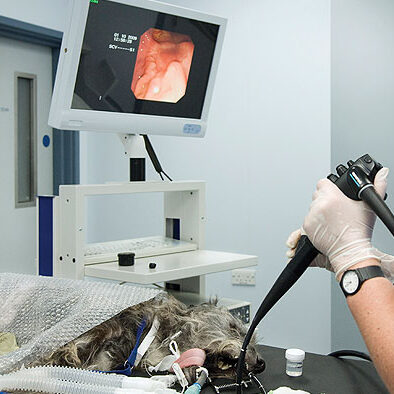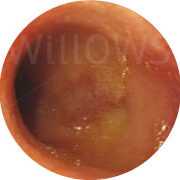Why Should I Bring my Pet to Willows for Investigation/Treatment of IBD?
Willows is one of Europe’s leading small animal referral centres. Our state-of-the-art hospital is led by internationally renowned Specialists, committed to providing the highest standards of veterinary care. At Willows we have a team of Specialists in Internal Medicine, Clinical Nutrition and Diagnostic Imaging, all of whom are involved in the investigation of chronic gastrointestinal disease. Our state-of-the-art facilities include access to the most advanced diagnostic equipment, such as high quality ultrasound and endoscopy, to comprehensively investigate symptoms.
Our team of Specialists have unrivalled experience in managing the spectrum of gastrointestinal diseases as well as with the latest therapeutic techniques, including the use of faecal transplantation. All of which is supported by our dedicated team of Nurses and clinical support staff are available 24 hours a day, every day of the year to provide the best possible care for your pet.
What is IBD?
IBD is a disease that causes inflammation in any part of the digestive tract (stomach and/or intestines and/or colon i.e. large bowel). Some breeds of dog, such as Soft Coated Wheaten Terriers have a genetic predisposition to this disease. In other breeds of dogs and cats it can be triggered by a parasite or food intolerance. More commonly no specific underlying cause is found and the disease is thought to be caused by an over-activity of the body’s immune system (which normally fights off infections) to ‘foreign’ proteins (such as food) that are eaten, resulting in inflammation. IBD is also known as chronic enteropathy (CE).
What are the Most Common Signs of IBD?
- Weight loss
- Vomiting
- Diarrhoea
- Increased or decreased appetite
- Blood or mucus in the faeces.

How is IBD Diagnosed?
IBD is diagnosed by a combination of tests, as several other diseases can cause similar symptoms. Blood tests are often performed to rule out underlying diseases such as liver or kidney disease, and faecal examination may be performed to look for any parasites. Blood tests to check the steroid hormone levels (cortisol), the efficiency of absorption (vitamin B12 and folate), and the function of the pancreas are also common.
Weight loss and vomiting can sometimes be caused by foreign body obstructions, or tumours, x-rays or ultrasound scans are performed to rule out these problems. Ultrasound is also useful to look at the thickness and layering of the gastrointestinal tract.
Fig 1: A flexible endoscope camera in use on a patient
Some patients will require the collection of biopsies from the gastrointestinal tract for a more definitive diagnosis. This is usually performed under a general anaesthetic using a flexible endoscope camera. This is not an invasive procedure and most pets recover very quickly and will go home within 24 hours.


What Treatment is Available for IBD?
Many dogs and cats will improve following a dietary trial. Often this involves prescribing a new diet that is hypoallergenic (i.e. unlikely to cause a reaction) or contains a protein source that your pet has not eaten before (such as venison or salmon). This is fed for one to two months and it is very important that no other food, treats or tit-bits are given. Some pets won’t respond to one diet but will respond to an alternative diet.
Manipulation of the bacteria in the gut can also help some patients. This can be performed using antibiotics, probiotics or through the use of faecal transplantation from a healthy dog.
Fig2: Endoscopic image of a dog’s duodenum (part of the small intestine)
Dogs and cats that are severely affected or that don’t respond to the treatments mentioned above will be prescribed steroids. A high dose is prescribed initially and this is decreased every few weeks for several months. Sometimes in pets that don’t tolerate steroids or don’t respond to steroids alone, other drugs which suppress the immune system are prescribed.
What Can I Expect for my Pet if it is Treated for IBD?
IBD has a broad range of severity, ranging from mild vomiting and diarrhoea to severe weight loss and very low blood protein levels. It is not generally a life-threatening disease, but can be in severely affected patients. It is not a curable disease, therefore the aim of treatment is to minimise the frequency of vomiting and diarrhoea: it is rare to be able to stop the clinical signs altogether. Keeping a diary of how often the signs are happening can be helpful to us in establishing the success of treatment. Most dogs and cats are able to live a good quality of life following a diagnosis of IBD.

